Albition Lenkoranska: landing and care, reproduction and photo. Lenkoran acacia
The long history of the migration of a decorative flowering tree has led to a variety of names assigned to it by different cultures:
- Albizia Lankaran;
- Acacia of Constantinople;
- Silk albicia;
- Silk tree
Brief Description of the Silk Tree
The tree that emerged from the subtropics of south-east Asia attracts the attention of gardeners to the exotic structure of flowers and non-standard flowering period. Abundant bloom lasts from July to August. Often, every flower lives a day or two. The inflorescence of the silk stock is a spherical tuft of thin stamens. Some species form clusters of inflorescences, collected in spikelets. From a distance, they resemble fluffy cylinders.
Experienced growers use this species for growing bonsai.
The subtropical plant reaches a height of one and a half meters in indoor conditions and up to ten meters in open ground. Twice feathery leaves grow to 20 centimeters in length. The branches form an umbrella-shaped crown, which is characteristic of the Australian and African flora. Flowering ends with the formation of beans with seeds.
A subtropical plant successfully grows in a warm climate close to a subtropical one: on the Crimean peninsula, in Moldova, in the south of Ukraine, in Georgia, etc.
Conditions agrotechnics albitsi at home
Agrotechnics subtropical guest is not particularly complex. Acacia tree or shrub gratefully take care in the first three years of cultivation. Mature plants are almost completely autonomous, not counting the indoor. It is important not to forget that the plant belongs to deciduous species with a pronounced period of rest.
The mode of illumination of the Lenkoran album
Silk acacia, though it migrated far beyond the natural range, still remains a big fan of sunlight. Regardless of the cultivation conditions, the plant should highlight the lighted place of the apartment or area. Young flowers should pritenyat from the scorching rays of the midday sun.
During the rest period, the silk acacia still needs good lighting.
Silk beauty positively perceives holidays in the open air, balcony or terrace. It is preferable to choose a place protected from the sun at noon and available for lighting at other times. Some species of albiti react to heat by twisting the leaves, which bloom again in the afternoon.
Optimum temperature and humidity
The silk tree belongs to the heat-loving cultures and perfectly tolerates 25-degree heat. In anticipation of rest, it is recommended to reduce the air temperature to eight to ten degrees Celsius. Albizia goes into hibernation after completion of leaf fall.
Subtropical acacia does not apply to frost-resistant crops. In the open ground it planted no earlier than three years of age.
Exotic tree does not impose special requirements on the humidity of the air and perfectly dispenses with spraying. Dry air does not affect the vegetative development of this plant.
Rules for watering and feeding albitsi
Exot perfectly responds to frequent and abundant watering. It is extremely important to use separated water for this. Too hard water of urban water supply is softened by boiling or freezing. Moisturizing the substrate is carried out by the method of top irrigation only after the drying of the topsoil.
During the rest period, watering is reduced to a minimum.
It is important to prevent the earthen coma from drying out, which can lead to the death of the root system.
Over-wetting of the substrate during the winter period can provoke root rot and subsequent death of the plant. 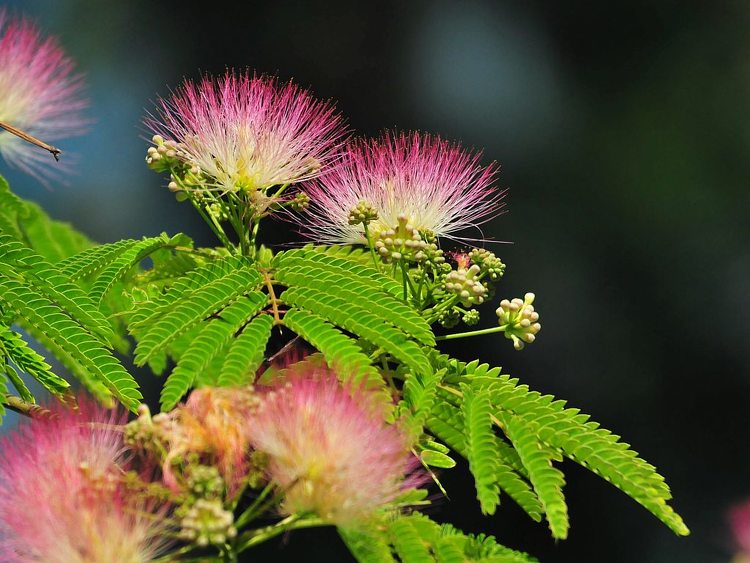 Albizia positively responds to the introduction of complex fertilizers for decorative and deciduous crops. Fertilizing make every month. The acacia grown in open ground is fed no more than once or twice a year. Mineral dressing combined with irrigation.
Albizia positively responds to the introduction of complex fertilizers for decorative and deciduous crops. Fertilizing make every month. The acacia grown in open ground is fed no more than once or twice a year. Mineral dressing combined with irrigation.
How to transplant the albition of Constantinople
Transplantation of deciduous plants is carried out before the start of sap flow and bud break. This is usually done in early March. Young specimens are transplanted annually. Starting from the age of three, transplants are performed every two to three years. Sometimes plant transplants are compensated by replacing topsoil. This trick is for adults only.
Albizia belongs to the thriving crops and needs a spacious flowerpot.
Acacia requires a loose, well-ventilated substrate. From industrial mixtures suitable primer for decorative leafy crops. Experienced gardeners prefer to independently procure ingredients for soil mixture. Home soil is prepared by mixing calcined sand with turf ground, crushed peat in a ratio of 1: 3: 2.
A quality layer of drainage material should be placed on the bottom of the pot for good outflow of excess moisture.
Ways and rules of reproduction of an ornamental bush
There are two most common ways of breeding the Lenkoran albition:
- seed germination;
- overgrowing;
- rooting cuttings.
The first method is used in the presence of inoculum and does not represent any particular trouble. Productivity depends on the freshness of the seeds. Cutting is done when there are no acacia beans on hand.
Seed propagation is not very difficult and consists of the following:
- Seeds must be stratified within two days. Both hot and cold methods are used to accelerate the development of seedlings from seeds.
- Swollen seeds are shallowly buried in a wet peat substrate.
- The beds are covered with polyethylene to maintain high humidity.
- The first shoots appear two to three months after sowing.
 The propagation of albition by radical growth is characterized by simplicity and high productivity. The only problem is that under room conditions, shoots appear extremely rarely. It is recommended to remove it so that the landing does not thicken. These sprouts are separated from the root system with a small part of the root and are planted in a separate pot. Saplings quickly take root in a new place.
The propagation of albition by radical growth is characterized by simplicity and high productivity. The only problem is that under room conditions, shoots appear extremely rarely. It is recommended to remove it so that the landing does not thicken. These sprouts are separated from the root system with a small part of the root and are planted in a separate pot. Saplings quickly take root in a new place.
It is extremely important to thoroughly disinfect the cut with a fungicide or activated carbon powder.
Reproduction of acacia of Constantinople by cuttings allows you to get a new instance in the absence of seed. Suitable sprigs are selected from waste after formative pruning or cut directly from the tree. It is recommended to select semi-woody one-two-year shoots.
The optimal time for cutting is the end of June and the beginning of July, before the onset of the flowering phase.
The length of the cutting varies from 10-15 centimeters. Extra leaves are removed, leaving two or three. The remaining leaf plates are shortened to reduce moisture loss. The branches are planted in the substrate and clean in a cool place. Rooting cuttings lasts one to two months.
Experienced gardeners process cuttings of growths with growth stimulants to speed up the process of root germination.
Rooted cuttings are planted in separate pots in early autumn. Subsequent care is no different from the conventional for this culture.
Silk Acacia is a wonderful choice for decorating the alley in the garden. The flowering of this type can yield only to the flowering of sakura in its beauty and tenderness. Silk acacia blooms with delicate pink flowers, umbrellas, surrounding passersby with an unforgettable scent. This fragrance can not be denoted by one definition: sweet, like honey, the scent of silk envelops you, violet notes will accompany you for a while, and a light breeze coming from the garden will entice again and again under the shade of silk acacia.
Albizia Lankaran or Silk Acacia (lat. Albizia julibrissin) is a type of tree of the genus Albizia of the Bean family. The following Russian names of the plant are found: Lankaran acacia, silk acacia, silk bush, silk tree. Tree height up to 10 m. Spreading umbrella-shaped crown reaches 7 m in width. Light green leaves resemble mimosa leaves, consisting of 20-30 pairs of leaves on secondary petioles (more than 10 on one leaf).
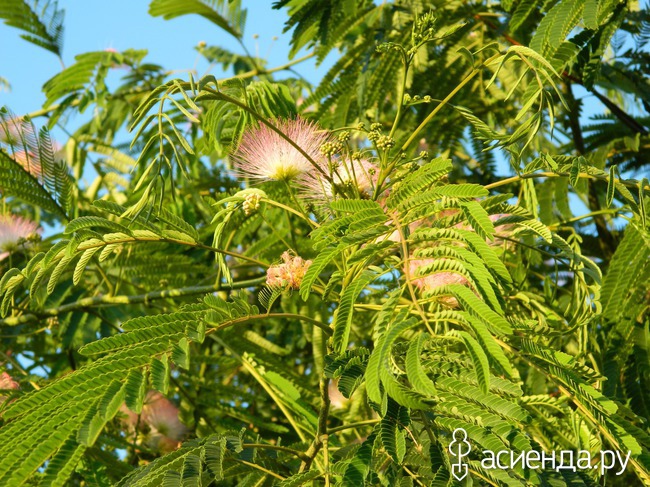
Acacia leaves bloom later than other trees, in mid-May, but the duration of flowering, depending on the climate, can last from late June to September. The color of acacia is light yellow with bright pink stamens, creating an image of either umbrellas or fluffy fans.
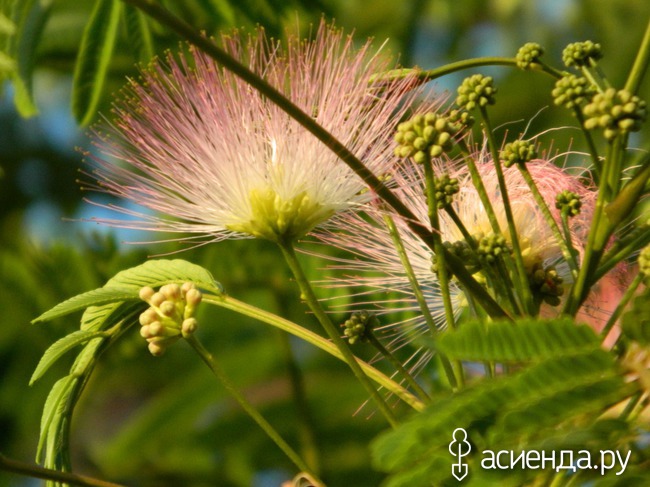
Acacia fruits are beans, multi-seeded pods up to 20 cm long. Ripened seeds are brown and relatively easy to store and germinate. Albizia - a tree is fast-growing enough, in favorable conditions at five years of age it can reach four meters in height, the life expectancy is up to 100 years. The tree is thermophilic and young trees can die at a temperature of -15 without special wraps.
Landscape Design

Albizia looks gorgeous in any combination, as a lonely standing tree, and as an alley in a large garden. An adult tree with a trunk 30-40 cm in diameter under its branches can cover a garden swing, a table for a family picnic, envelop the aroma of tenderness, create an indescribable atmosphere of romance and comfort. However, to hide in her canopy from the midday heat will not come out: openwork leaves let in a lot of sunlight. Silk Acacia is a good companion for flowers and shrubs who love the sun. Young trees planted on both sides of the path quickly close the dome, after 5 years forming a tunnel of greenery and flowers.
Breeding
Albitia breeding does not cause difficulties. It is grown from seed, cuttings, root shoots and grafting. Seeds before planting need to be stratified. Soak in warm water for 5-6 hours, mix with the soil and place in a cold (for example, a refrigerator or a deep basement) for a month or two. Cutting is carried out from one-year-old twigs. Take the middle of the shoot, 2-3 buds. Half of the cutting is processed by root formation stimulants and planted directly in open ground.Acacia trees often produce root shoots, in which case the shoots are easily separated and, without much preparation, are planted in open ground. By grafting this tree is propagated extremely rarely because of the laboriousness of the process and the simplicity and availability of other methods. But grafting is still acceptable and possible.
Wintering
This type of acacia is thermophilic and may suffer in the freezing cold. Mature trees for the most part easily survive the frosts down to -15, but young trees can become sick or even die. If it is a one-year-old sprout, you can wrap it with cardboard, as if wearing a tube. Higher trees are wrapped up to the crown with foam rubber, or natural insulation (lapnik, peat, leaves) wrapped in plastic.A small flat brown seed, surrounded by your care, will repay you in full, giving not a million scarlet roses in the summer, but a million of fluffy, delicate pink fragrant fabulous impressions and aromas!
It draws attention with its bright colors resembling the flowers of exotic acacias. In our gardens they grow Lankaran albitiawhich is sometimes called silk acacia. Those who have rested at least once in the Crimea, must have seen on the Black Sea coast an elegant shrub, which locals call coastal “mimosa”.
Park Albition With a thick umbrella crown is popular in all tropical and subtropical countries. It is very similar to a real acacia: the same double-pinnate leaves and fluffy flowers, in which very long stamens stand out. In our climate, these beautiful deciduous plants prefer to keep in tubs. In the south of the republic one of the umbrella acacias - lankaran albition - widely bred in open ground. It can be distinguished from the Caucasian acacia (silvery "mimosa") only by flowers, as it has the same finely dissected, feathery leaves. And only when an adult plant puts on its delicate pink outfit, and in summer, and not at the end of winter, like in “mimosa”, does the mistake become obvious: we have an albition.
Really, in the flowers of albition very long filaments, which, depending on the variety, may be white, pink or red, which gives them a high decorative effect.
Albizia Lankaran It is a large deciduous tree with a height of 10-12 meters. It has a sprawling umbrella-shaped crown, as in some species of tropical acacias. The leaves of albition are openwork, dissected into many small lobes. According to some scientists, the birthplace of this plant is Lenkoran (a city in Azerbaijan).
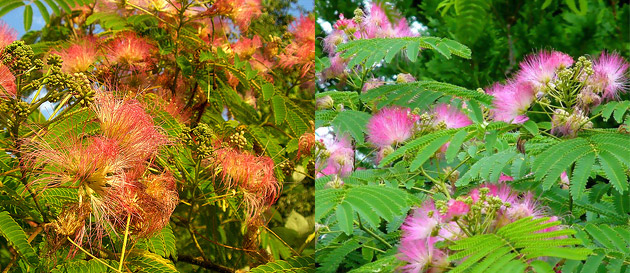
Lankaran shrub - a plant of a dry warm climate, but even in the coldest winters for our conditions, the albition is not damaged. Apparently, this is due to climate change. The only thing that remains the same is that light-requiring albition and cannot grow under the shade of other trees.
Leaf cover is late at the end of May, when almost all the trees have already blossomed. Albitia blooms profusely and continuously - from mid-June to September-October, depending on the weather. In autumn, it keeps its leaves for a very long time (sometimes until the end of November), which few trees in our climate are capable of. Albitia until the last moment remain green, and they can be destroyed only by sudden frosts.

Albitia is propagated by seeds, cuttings, root shoots. But the seeds of albition require a “hot” stratification. For this, seeds are soaked for 5-6 hours in hot water (+60 C), and then sown. You can apply the usual "cold" stratification, which the seeds pass in our winter right in the ground. When autumn sowing seed germination in the spring is about 80%, and single seeds can rise in a year. In the first year albiza seedlings grow slowly and by the fall rarely reach a height of 20 cm. It is not worth feeding them at this time: you can burn the roots of young plants. In addition, with an excess of nitrogen fertilizers, the vegetation of plants is delayed, and the wood of seedlings may not mature well for winter. Then, in severe frosts, plants can suffer greatly. Top dressing of seedlings of albition can be started from the second year of life, gradually increasing the dosage.
Vegetative propagation of albition apply more often. Some trees give root growth, which can be separated and planted when the plants are at rest. And the Lenkoran acacia is grafted satisfactorily: it is possible to use both lignified and green cuttings.
Lignified cuttings are cut from annual gains last year. They take cuttings with 2-3 buds from the middle of the shoot, process them with root formation stimulants and plant them in a permanent place in loose fertile soil. After 3-4 months rooting usually occurs at 70-80%.

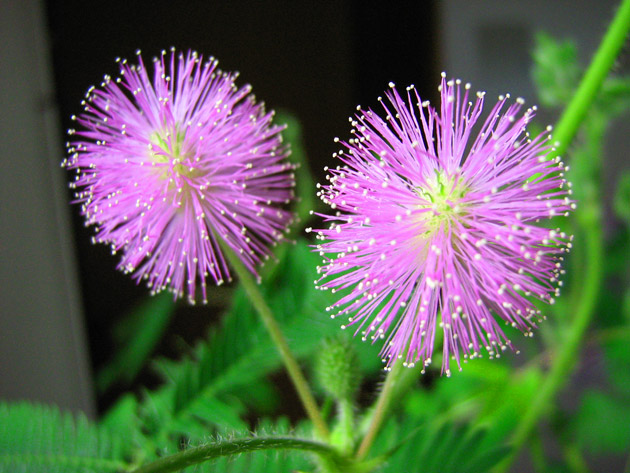
Many acacias are bred as decorative. Perfect for creating spectacular, undergrowths and alleys. Sometimes used as a tapeworm. The main economic purpose - gardening, securing the slopes, the device windbreaks.
under the headingBeautifully blooming miracle tree in the Crimea. The smell of acacia is delicate, such violet with raspberries.
Alkitsiya Lenkoranskaya, or Acacia Silk (lat. Albizia julibrissin) is a type of tree of the genus Albizia of the Bean family.
There are the following Russian names of the plant: Lenkoran, silk, silk bush, silk tree, Gul-ebrishim, Chinese ...
The first part of the scientific name - Albizia - comes from the name of Florentine Filippo del Albiztsi (Italian. Albizzi), who introduced Europe to this plant in the 18th century. The specific epithet julibrissin is a distorted gul-i abrisham (Pers. گل ابریشم), which means “silk flower” in Farsi (from gul گل - “flower”, abrisham ابریشم - “silk”).
Albizia flowers smell very delicate, and feathery leaves resemble fans. By the way, at night the leaves fold. The flowers of Lankaran acacia have very long staminate threads, which can be white, pink or red, depending on the variety, which gives them a high decorative effect.
Lankaran acacia belongs to the legume family and is a large deciduous tree up to 10-12 meters high with a sprawling umbrella-shaped crown, as in some species of tropical acacias. The leaves are openwork, dissected into many small lobes. According to some scientists, this plant’s birthplace is Lenkoran, but it is much more widespread - from Transcaucasia to some regions of Central Asia.
![]()
Lankaran Albitia is widespread in culture, including in the extreme south of Russia and in the south of Ukraine. Heat-loving plant, freezing even in Tbilisi and Baku.
Good honey plant. Albitia bark was used for dyeing in brown and yellow colors of wool and silk. Dense wood with a beautiful pattern is well polished.
Lankaran acacia care: Albizia prefers sunny places and neutral sandy (one third of the volume) soils. It is moisture-loving, however adult plants are rather resistant to drought, and also maintain short-term frosts up to 10-15 degrees. It tolerates pruning.
Lankaran acacia is a plant of a dry warm climate. I don’t know its frost resistance, but even in the coldest winters for our conditions (with frosts down to –10 degrees) Lankaran acacias are not damaged. However, in recent years, albitions have become much less durable than before. In some places in the city there are still trees with a trunk diameter at the base of up to 70-80 cm, and lately they rarely reach half a meter in diameter and dry out. Apparently, this is due to climate change. According to the stories of old-timers, earlier in our places in the summer it was much drier and warmer, which evidently liked this acacia more.
Albition is light-requiring, it cannot grow in the shade of other trees.
Lankaran acacia blooms late, in mid-May, when almost all the trees were already blooming. Its flowering is abundant and long-lasting - it begins in mid-June and lasts until September-October, depending on the weather. In autumn, it keeps its leaves for a very long time (sometimes until the end of November), which few trees in our climate are capable of. Until the last moment, the al'bits remain green, and only frost or strong wind can destroy them all at once.
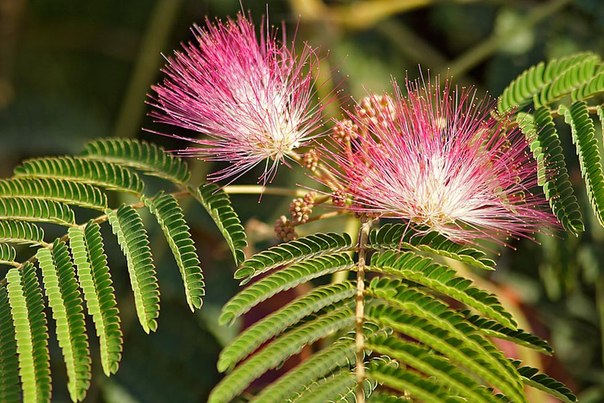
". Scientists attribute culture to the family and note the deceptiveness of tenderness and lightness reigning around the areola tree. In fact, with age, its powerful trunk grows to a height of 12 meters, and in girth it can reach 3 meters. Planted along the avenue of young seedlings already at the age of five converge into a light green dome of foliage.
Did you know? Shelkovichnaya was so named in honor of the Italian botanist Filippo Albizia, who in 1740 brought a sprout of an unknown plant at that time from Constantinople to Europe, which attracted the eye with thick fragrant inflorescences and decorative foliage.
This deciduous variety is significantly different from its counterparts. It is characterized by a raznaya, resembling an umbrella, a crown, which in the volume reaches 7 meters, bright juicy leaves of the pinnate form and unusual. 
The root system of the plant is very powerful, but it develops superficially. Therefore, the tree carries severe frosts. If it is not prepared for - it may die.
Regardless of the shape that you prefer for further cultivation, the plant has a straight-growing trunk with smooth grayish bark and thick shortish branches.
Each leaf plate of albition reaches a length of up to 20 cm and consists of 15–30 pairs of small, strongly dissected leaves. At night, they fold and wilt, and in the morning they open up again cheerfully. In addition, they appear on the branches much later, compared with other inhabitants of the garden. 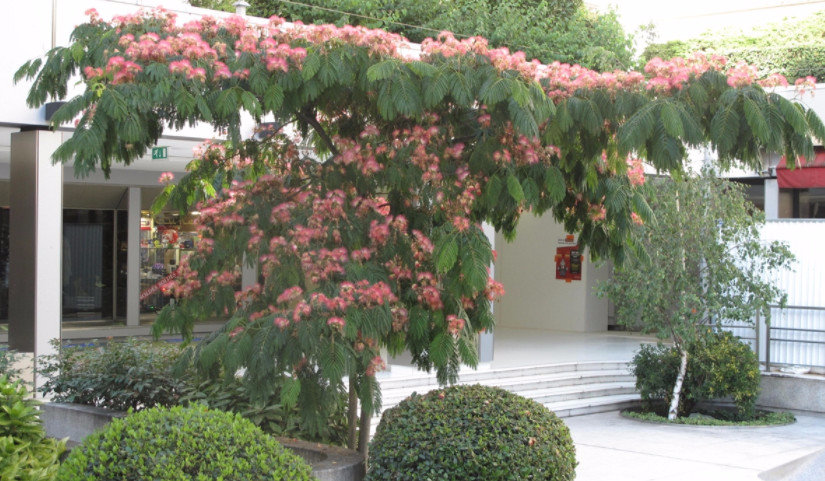 Fluffy paniculate inflorescences of pink and white and cream color appear in the period, and depending on the climatic conditions, they can flaunt themselves on a thick crown until September. Their peculiarity is a strong fragrant aroma and elongated purple stamens that extend beyond the five-petalled corolla.
Fluffy paniculate inflorescences of pink and white and cream color appear in the period, and depending on the climatic conditions, they can flaunt themselves on a thick crown until September. Their peculiarity is a strong fragrant aroma and elongated purple stamens that extend beyond the five-petalled corolla.
Important! Albizia can easily overwinter at 15-degree frosts, but when the thermometer drops to -18 ° C, young shoots suffer and skeletal branches are damaged. If on the street a stable 20-degree frost stays on for a week, the tree will die.
After the Lenkoran acacia has faded, long pods appear in place of the thyroid inflorescences. In each of them there are 9–10 large grains.
Culture can be propagated by seed or vegetative methods. But most gardeners prefer to root the root growth, which appears in large quantities.
The family Bean has more than 20 thousand species, among which,.
Wild specimens of albition today can be found in the tropical zones of Africa, Madagascar, India, Australia, and Mexico. Moreover, they are found both in desert and wet areas. But, despite this wide range of distribution, botanists unanimously agreed on the opinion that warm Azerbaijan is the homeland of the plant.
Care and conditions for growing in the house
Albizia room, as well as garden, completely unpretentious. She feels comfortable in any conditions, just to be warm, and there was no lime. Consider all the details of care in detail.
Did you know? Albizia lives about a century. At the same time, it develops very quickly, but by the age of 30 the bark cracks on the tree, numerous hollows appear on the trunk and the crown significantly thins.
Lighting
For a thermophilic tropical guest the sun is a vital factor. Without its rays, the plant will not be able to fully develop. Therefore, it is worthwhile for him to find an appropriate well-welded zone.
In this case, direct ultraviolet light should fall on the culture only for some time. For street young trees, an area with diffused light is ideal, and for indoor specimens a slightly covered south window. In winter, the plant requires additional lighting with fluorescent lights. 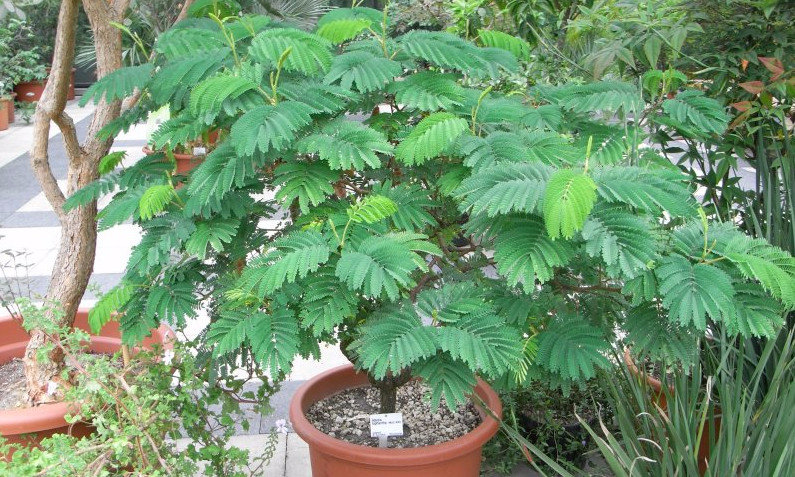
Temperature
Although the albition is a zealous fan of the sun and heat, but the long heat is contraindicated for it. Comfortable development it provided at a temperature +20 ... + 25 ° С. In the summer, it is desirable to make the street. On hot days it is better to place them under the crowns of razlohy tall trees. And if there is no such possibility, the south-east or south-west will suit as an alternative.
Important! If you are prone to allergies to the flower, then do not rush to acquire a silk tree. After all, it is possible that your list of allergens will expand by another item.
At room mulberry trees, like garden, with the advent of winter comes a period of rest. Therefore, at this time it is important for them to ensure proper thermal conditions. Experienced flower growers are advised to put a container with a flower in a cool room where the temperature varies between +5 ... + 10 ° C. This may be an unheated loggia, a veranda or a summer kitchen. Do not worry if during wintering the plant for some time will be at zero temperature. Such a drop will not affect its development.
Watering and humidity
During the period of intensive development, Lankaran requires abundant soil moistening, but with the onset of cold weather, these procedures are minimized. In the summer, it is important to monitor the condition of the upper layer of the earth around the plant and to prevent it from drying out. And in the winter, at least once a week, pour a small amount of settled warm water under the roots. 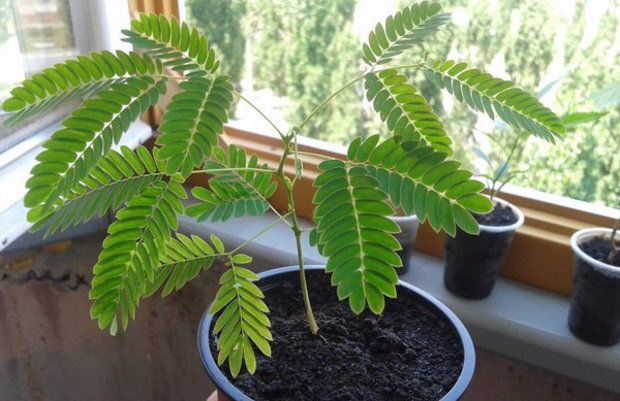 Despite the tenderness of inflorescences and juiciness of the leaves, the plant does not require additional spraying of the crown. Being content with moisture from, it fully develops. Therefore, the level of humidity in the room is completely irrelevant.
Despite the tenderness of inflorescences and juiciness of the leaves, the plant does not require additional spraying of the crown. Being content with moisture from, it fully develops. Therefore, the level of humidity in the room is completely irrelevant.
Did you know? The word "" comes from the Greek "Akaki", which in translation means the ancient prickly tree of Dioskorida and Theophrastus.
Feeding
Even beginners know that if you do not feed the culture with essential trace elements and nutrients, it will very soon lose its decorative effect and slow down its development. To prevent this from happening with silk, it should be fertilized after 2-3 weeks.
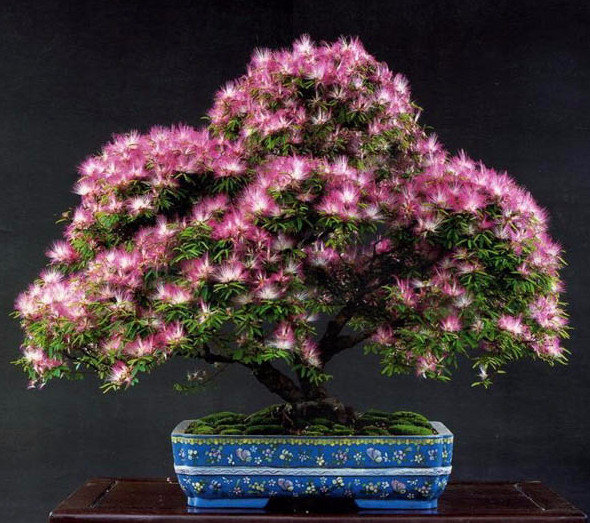 For this, experts advise the use of complex minerals intended for decorative foliage.
For this, experts advise the use of complex minerals intended for decorative foliage.
When and how to bloom
A variety of forms of inflorescences, their colors and arrangement of foliage, divided the albition into several species.
This is about:
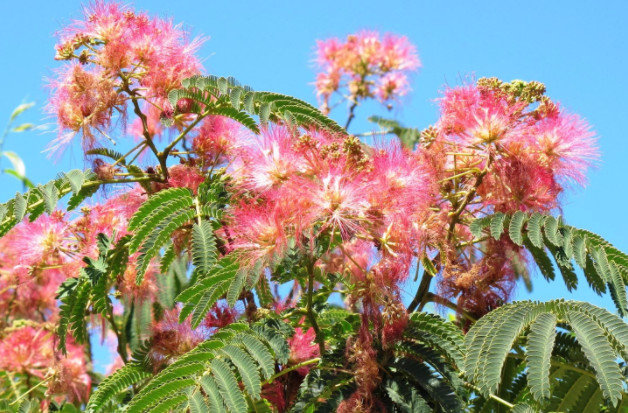
Did you know? Since ancient times, any kind of acacia was considered a symbol of stability and renewal. This is evidenced by the mention of the plant in documents found by historians. And on ancient Egyptian artifacts, archaeologists still find images of sarcophagi with acacia sprouts growing from them. These pictures eloquently show that life comes only after death.
Both types of silk wood differ in long flowering. In the first variant, this period begins in the last decade of May and, under favorable climatic conditions, may last until October. In the warm autumn season in the Crimea, there were cases when the tree pleased passers-by with fragrant flowers before themselves. The second variety is distinguished by an earlier blooming of buds. In this phase, the plant enters from March to June.
Silk and puchtsvetnoy acacia very fragrant and honey flowers. Moreover, the pleasant smell with pronounced notes of raspberry and violets persists throughout the entire flowering period. 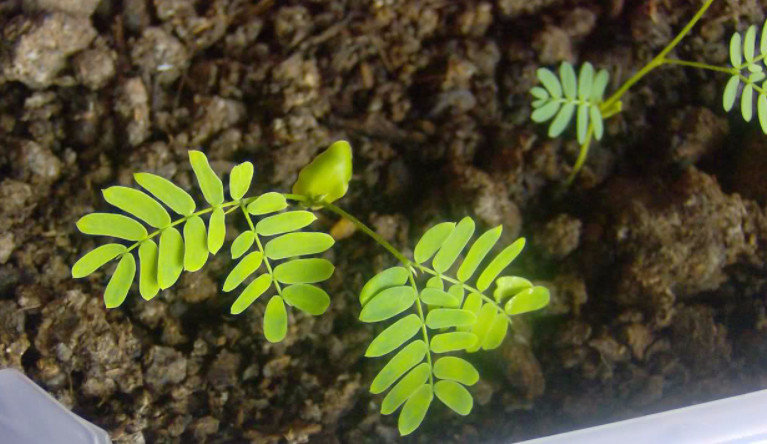
Features of winter care
We have already partially mentioned the weakness of the plant and its sensitivity to low temperatures. But due to the fact that gardeners on the forums often touch upon the topic of ensuring competent wintering, we will carefully examine all the details.
Did you know? Many religious scholars tend to think that the wreath of Jesus Christ was woven from the branches of acacia.
If we are talking about young saplings of the street action, then for a safe wintering they will need a thick humus layer of mulch in the forest hole and a cloth or cardboard shelter of the branches. Some gardeners practice wrapping acacia crown in foam rubber, plastic wrap, lapnik or. Mature trees can safely tolerate 16 degrees of frost. That is why in regions with severe winters, the plant is mainly cultivated in indoor conditions.
A potted silk bush after a seasonal stay in the garden should definitely be put in a cool place for the winter. For these purposes, the cellar does not fit at all, since the culture lacks light there. It is important that it is kept at a temperature of + 12 ° C. 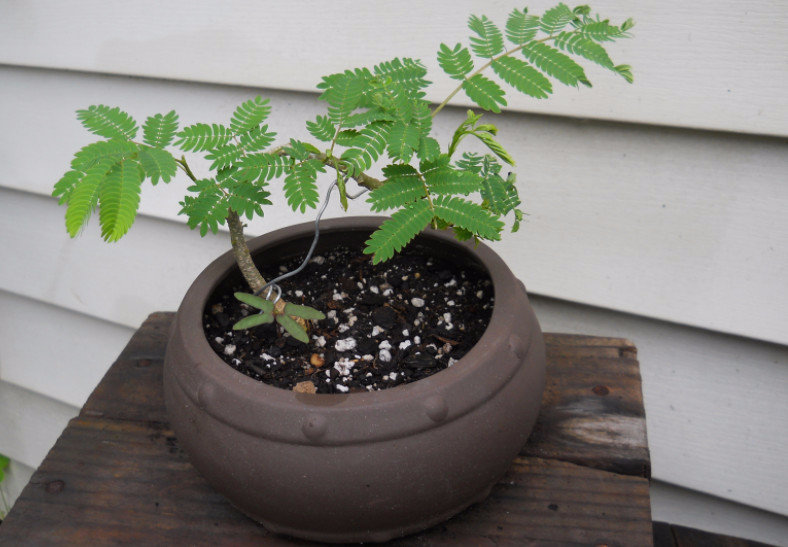 This is the optimal mark of the thermometer, which will allow the plant to comfortably winter. Do not be alarmed if in November the tree exposes its branches. This means that he began a period of peace. It is better not to disturb such an instance without the need, but it is also impossible to completely forget about it. Occasionally it is needed to support the viability of the roots.
This is the optimal mark of the thermometer, which will allow the plant to comfortably winter. Do not be alarmed if in November the tree exposes its branches. This means that he began a period of peace. It is better not to disturb such an instance without the need, but it is also impossible to completely forget about it. Occasionally it is needed to support the viability of the roots.
Did you know? Botanists insist that the Australian varieties of acacia are able to prevent the development of cancer diseases.
Transplant: soil and pot
Given the intense pace of cultural development, get ready for annual transplanting young plants. With age, this need will arise every 2–3 years. In this case, you need to focus on the state of the flower.
Experts believe that the best period to implement this venture is when a tree moves away from hibernation. First of all, stock up on the appropriate landing capacity. Ideally, it should be 3–4 centimeters higher than the previous diameter, be deep and clay. This material contributes to the aeration of the roots, which undoubtedly affects the development of the flower.
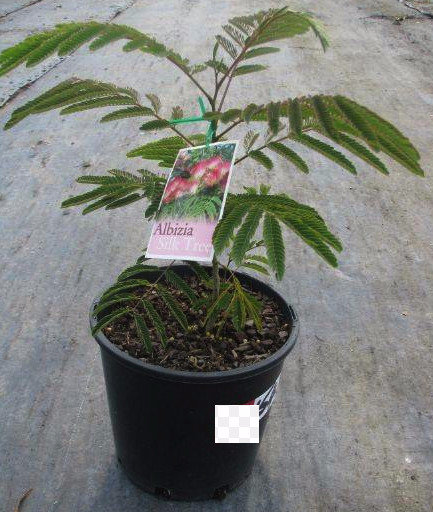 If used pots are used, first of all be sure to wash them and disinfect with a concentrated solution of potassium permanganate.
If used pots are used, first of all be sure to wash them and disinfect with a concentrated solution of potassium permanganate.
Breeding methods
A new seedling of the potted specimen can be grown from the seeds or obtained by rooting cuttings. Consider the nuances of these popular methods of reproduction of Lenkoran acacia.
Seeds
If you prefer this method and have prepared seed in time, before planting complex preparatory work.
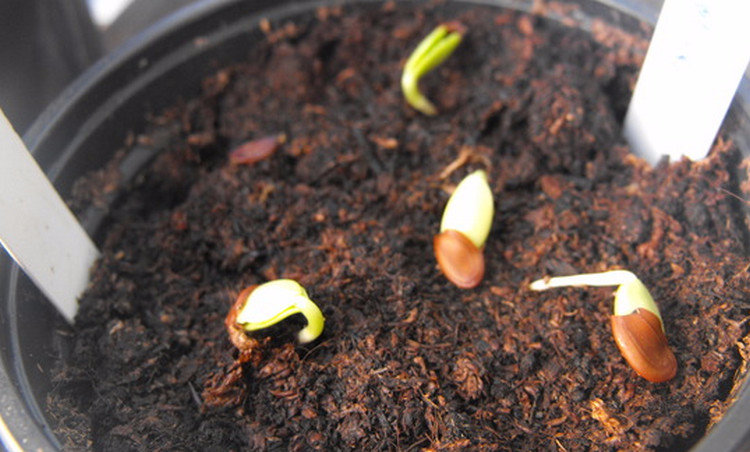 First of all, prepare the necessary tanks and peat-sand substrate. All vessels and inventory should be thoroughly disinfected with potassium permanganate solution, and the earth should be warmed up a little. Pip the seeds for 2–3 days with warm water so that they swell. Then treat them with any growth stimulator (, Emistim,).
First of all, prepare the necessary tanks and peat-sand substrate. All vessels and inventory should be thoroughly disinfected with potassium permanganate solution, and the earth should be warmed up a little. Pip the seeds for 2–3 days with warm water so that they swell. Then treat them with any growth stimulator (, Emistim,).
After the done manipulations, you can begin landing. It is carried out very simply: you need to stick in the wet soil mixture, cover the container with polyethylene and send in a warm place for germination. Be prepared to periodically moisten the substrate for several months.
Did you know? In warm countries, it is customary to plant the albition along roads, because the culture is not at all afraid of burning, soot, and car exhaust.
Some growers do not recognize the above-mentioned method of growing albition from seeds at home. They prefer a more modern technology involving the use of peat tablets. In this case, the material is immersed in a small container, macerated to full swelling and slightly deepen the grains in it.
Cuttings
This method differs from the previous one in the greater survival rate of plants, as well as in the growth rate, but loses in terms of resistance to adverse conditions, pests and diseases.
Experts advise stocking cuttings in the first half of June. To do this, cut about 10–15 centimeters of the apical part of the lignified sprout. Best to choose side shoots of the current year.
The prepared material under a slope deepen in wet agroperlite or peat-sand mixture. After that, the container is placed in a cool room, where the temperature does not exceed 16 ° C. Similarly to the previous method, the substrate should always be wet, but do not overfill it, because otherwise the planting material will hit the mold and fungi, which will reduce the chances of rooting. When powerful roots are formed on the cuttings, the plant can be transplanted together with a lump of soil into a permanent pot.
That's all the secrets of caring for a completely picky Lenkoran acacia. It will not take you too much time, but wherever she grows, she will be happy for a long time with pleasant fragrant flowers. They will become a worthy decoration of both the garden and the living space.
Was this article helpful?
Well no

